2010 International Year of Biodiversity
Thursday, April 8th, 2010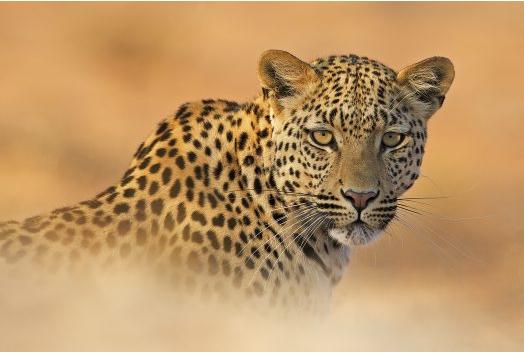 ‘Eyes in the oasis’
© Lee Slabber, (South Africa), 2009 Wildlife Photographer of the Year
.
‘Every morning, Lee would drive 50 kilometres (32 miles) across the Kalahari Desert dunes that separated two dry riverbeds in the Kgalagadi Transfrontier Park, South Africa. The only sign of life – or rather, death – was near a small pan, a mini-oasis in the middle of the dunes, where oryx bones lay scattered all about in various states of decay. One day, Lee stopped to photograph the bones. As he did so, he sensed that he wasn’t alone. ‘I got the feeling I was being watched,’ he said. ‘I slowly turned to face a most beautiful young male leopard, looking intently at me from behind a small bush. I could see how the deep-red dunes would be perfect camouflage for him.’ A moment later, the leopard fled, ‘obviously as shocked to see me as I was to see him.’
[Camera equipment used: Canon EOS-1D Mark III + Canon EF 600mm lens; 1/250 sec at f5.7; ISO 200.]This photograph is available to buy as a print.
http://australianmuseum.net.au/image/Eyes-in-the-Oasis/
‘Eyes in the oasis’
© Lee Slabber, (South Africa), 2009 Wildlife Photographer of the Year
.
‘Every morning, Lee would drive 50 kilometres (32 miles) across the Kalahari Desert dunes that separated two dry riverbeds in the Kgalagadi Transfrontier Park, South Africa. The only sign of life – or rather, death – was near a small pan, a mini-oasis in the middle of the dunes, where oryx bones lay scattered all about in various states of decay. One day, Lee stopped to photograph the bones. As he did so, he sensed that he wasn’t alone. ‘I got the feeling I was being watched,’ he said. ‘I slowly turned to face a most beautiful young male leopard, looking intently at me from behind a small bush. I could see how the deep-red dunes would be perfect camouflage for him.’ A moment later, the leopard fled, ‘obviously as shocked to see me as I was to see him.’
[Camera equipment used: Canon EOS-1D Mark III + Canon EF 600mm lens; 1/250 sec at f5.7; ISO 200.]This photograph is available to buy as a print.
http://australianmuseum.net.au/image/Eyes-in-the-Oasis/
.
The United Nations (UN) has declared 2010 the International Year of Biodiversity.
Why?
- To seek to significantly reduce the rate of biodiversity loss by the end of 2010
- To celebrate and promote biological diversity – the variety of life on Earth
- To boost awareness of how important biodiversity is for humanity
- To highlight how seriously biodiversity and nonhuman species are threatened with extinction, and the implications for human wellbeing.
The UN’s Approach to Protecting Biodiversity
- Sound management of natural resources to support peaceful communities
- Encouraging well-balanced economic growth
- Reducing poverty
.
IUCN
The IUCN, the International Union for Conservation of Nature, is the world’s oldest and largest global environmental network – a democratic membership union with more than 1,000 government and NGO member organizations, and almost 11,000 volunteer scientists in more than 160 countries.
The IUCN helps the world find pragmatic solutions to our most pressing environment and development challenges. It supports scientific research, manages field projects all over the world and brings governments, non-government organizations, United Nations agencies, companies and local communities together to develop and implement policy, laws and best practice.
The IUCN posits 5 sound reasons why humans need to maintain health biodiversity
- To maintain food sources
- For medicinal benefits associated with diverse plant and animal life
- To mitigate the effects of climate change
- To provide employment
- To enable peoples vulnerable to the effects of climate change improve their livelihoods and increase their resilience to climate change impacts.
.
The Importance of Biodiversity for its own sake [posited by Editor]
- To respect natures processes and ecosystems
- To prevent continuing extinctions
- To prevent extreme climate change
.
To boost global awareness of the importance of biodiversity for humanity
‘The IUCN together with its Members and partners wants to see biodiversity at the top of the global agenda, leading to stronger action from all sectors of society including government and industry to safeguard it.’ ‘Humans are an integral part of biodiversity and have the power to protect or destroy it.’ ‘In the western world, we have become so far removed from biodiversity that we’ve forgotten how much we use it in our daily lives from the food we eat to the clothes we wear to the medicines we use.’
When we Bluefin tuna, we rarely think of the species that the tuna depends on to thrive, or that this species is a serious risk of being fished into extinction. When forestry agencies fell a mature tree to make a table or woodchips, mammalian habitat is lost.
.
To highlight how seriously biodiversity is threatened
Human activities continue to destroy the natural world at an unprecedented rate through habitat destruction, over-harvesting, pollution, poaching, and induced climate change. We’re facing a global species extinction crisis. We need to do better at making the scientific, social, economic and cultural case for keeping diversity, and show just how much it supports nearly every aspect of human life and progress. Through our International Year of Biodiversity focus, we’ll be doing just that, starting with a look at IUCN’s projects relating to forest biodiversity in February.
.
Risks to Biodiversity, Ecosystems and nonhumans species is at crisis point
- ‘The escalating extinction crisis shows that the diversity of nature cannot support the current pressure that humanity is placing on the planet.’
- ‘Every day biodiversity is being lost at up to 1,000 times the natural rate. The extinction of individual species, but also habitat destruction, land conversion for agriculture and development, climate change, pollution and the spread of invasive species are only some of the threats responsible for today’s crisis.’
- ‘Coral reefs provide food, storm protection, jobs, recreation and other income sources for more than 500 million people worldwide yet 70% of coral reefs are threatened or destroyed.’
- ‘17,291 species out of 47,677 assessed so far are threatened with extinction.’
- ‘Of the world’s 5,490 mammals, 79 are Extinct or Extinct in the Wild, with 188 Critically Endangered, 449 Endangered and 505 Vulnerable.’
- ‘1,895 of the planet’s 6,285 amphibians are in danger of extinction, making them the most threatened group of species known to date.’
- ‘With the current biodiversity loss, we are witnessing the greatest extinction crisis since dinosaurs disappeared from our planet 65 million years ago. Not only are these extinctions irreversible, but they also pose a serious threat to our health and wellbeing.’
- ‘From time immemorial, nature has fed us, cured us, and protected us. But today the roles have switched. We need to feed nature, we need to cure it and protect it if we want to secure a healthy and prosperous future for our children.’
- ‘Climate change is set to be one of the major drivers of species extinctions in the 21st century: approximately 20 to 30 per cent of plant and animal species are likely to be at increasingly high risk as global mean temperatures rise.’
.
IUCN Species Most Vulnerable to ‘Climate Change Extinction’
A recent IUCN report identifies the following 10 species are most vulnerable to ‘climate change extinction‘.
- ^Arctic Foxes
- ^Clownfish
- ^Koalas
- ^Emperor Penguins
- ^Leatherback Turtles
- ^Staghorn Corals
- ^Ringed Seals
- ^Quiver Trees
- ^Salmon
- ^Beluga Whales
.
Arctic Foxes
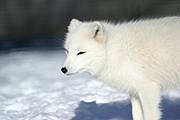
- The Arctic Fox is one of the top land-dwelling predators of the Arctic region. It is thought to be one of the first mammals to have colonised Sweden and Finland following the last ice-age.
- As the Arctic region warms, tundra habitat may slowly be replaced by boreal forest from the South. Forest habitat is unsuitable for Arctic Foxes.
- Red Foxes prey on and are superior hunters to Arctic Foxes. Northward encroachment of Red Foxes into the Arctic Fox’s range has already been documented and is likely to continue as the tundra warms.
- Arctic Foxes prey largely on lemmings and voles. Milder and shorter winters are predicted to cause declines in the regularity of these rodents’ population cycles, as well as decreases in their overall numbers.
- These factors are likely to cause declines in Arctic Fox numbers and range size. Arctic Foxes highlight the impacts of climate change on the ways that species interact with each other, both through competition and via changes in predator-prey relationships.
.
Koalas
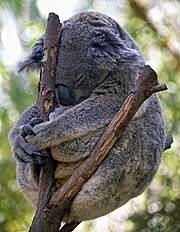
[Editor: What Australian would have thought our precious and assumed plentiful Koalas could be threatened? Well the Tasmanian Tiger was once plentiful across Tasmania. None of us should take our wildlife for granted]
- ‘Koalas are iconic animals native to Australia. They are true habitat and food specialists, only ever inhabiting forests and woodlands where Eucalyptus trees are present.’
- ‘Increasing atmospheric CO2 levels will reduce the nutritional quality of Eucalyptus leaves, causing nutrient shortages in the species that forage on them. As a result, Koalas may no longer be able to meet their nutritional demands, resulting in malnutrition and starvation.’
- ‘Increasing frequency and intensity of droughts can force Koalas to descend from trees in search of water or new habitats. This makes them particularly vulnerable to wild and domestic predators, as well as to road traffic.’
- ‘Koala populations are reported to be declining due to malnutrition, the sexually-transmitted disease chlamydia, and habitat destruction.’
- ‘Koalas have very limited capability to adapt to rapid, human-induced climate change, making them very vulnerable to its negative impacts.’
.
Emperor Penguins
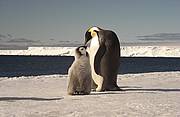
- For much of the year, Emperor Penguins live on thick sea ice in the Antarctic, which they use for mating, chick rearing and moulting.
- In some regions of the Antarctic, seasonal sea ice extent and thickness have reduced in recent decades following climate change. Continued warming will lead to further reductions in sea ice, impacting Emperor Penguins, with more northerly colonies being most at risk.
- The biomass of Antarctic krill has decreased in recent decades correlating with decreases in sea ice. Changes in krill abundance are likely to negatively affect Emperor Penguins and many other Antarctic species.
- Emperor Penguins highlight the possible impacts of rising sea temperatures and melting sea ice due to climate change. These changes directly or indirectly affect many other species in the Antarctic marine ecosystem.
.
Ringed Seals
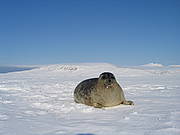
- ‘Ringed Seals live primarily in the high Arctic and are heavily dependent on Arctic ice, almost never coming onto land.’
- ‘Warming spring temperatures and early ice breakup are causing nursing young to be prematurely separated from their mothers and to be exposed both to the elements and to predators.’
- ‘To cope with global warming, Ringed Seals will need to shift their territories to track suitable ice conditions. Increases in disease and disturbance by humans are also likely challenges.’
- ‘Marked decreases in Ringed Seal abundance are likely to have cascading effects in Arctic food webs. They are the most important species in the diet of Polar Bears.’
- ‘Ringed Seals highlight the direct impacts of climate change on polar habitats, including the effects ice loss has on other ice-adapted species.’
.
.
IUCN participation and Goals for 2010
.
Failure of the 2010 Biodiversity Target
Adopted in May 2002 during the sixth Conference of the Parties to the Convention on Biological Diversity, the 2010 Biodiversity Target aimed to achieve, by 2010:
‘a significant reduction of the current rate of biodiversity loss at the global, regional and national level as a contribution to poverty alleviation and to the benefit of all life on earth’.
Unfortunately, we now know that this aim is far from being met. As we are facing an ever-increasing biodiversity crisis, we need a new, clear and realistic target to respond to it.
Negotiations on the new post-2010 framework will be taking place throughout this year, paving the way for the 10th Meeting of the Parties to the Convention on Biological Diversity in October.
.
1. 2010 Convention on Biological Diversity [Japan]
To follow up on the 1992 Earth Summit in Rio de Janeiro where world leaders adopted the Convention on Biological Diversity (CBD). The Convention has three main objectives:
- To conserve biological diversity
- To use biological diversity in a sustainable way
- To share the benefits of biological diversity fairly and equitably.
The Tenth meeting of the Conference of the Parties to the Convention on Biological Diversity will take place from 18 to 29 October 2010 in Nagoya, Japan.
.
This meeting is set to be a milestone for the Convention. It is during this event that the Parties of the Convention are expected to adopt a new set of post-2010 biodiversity targets. They will also agree upon an international regime to regulate access to genetic resources and the sharing of benefits that we gain from their use.
To keep up to date visit: http://www.cbd.int/cop10/
COP10 [Nagoya] Issues for in-depth consideration
- Inland waters biodiversity
- Marine and coastal biodiversity
- Mountain biodiversity
- Protected areas
- Sustainable use of biodiversity
- Biodiversity and climate change
.
2. COP10 Meeting of the Access and Benefit Sharing Working Group [Colombia]
From 22-28 March 2010, around 600 delegates representing Parties to the Convention on Biological Diversity (CBD), non-governmental and international organizations, and partners, gathered in Cali in Colombia to give the final push to the negotiations on the international regime to regulate access to genetic resources and the distribution of the benefits derived from their use.
This is the ninth and final meeting of the Ad Hoc Open-ended Working Group on Access and Benefit Sharing (ABS) before the tenth Conference of the Parties of the Convention (COP10). The Working Group has been mandated to finalize its work and deliver an ABS international regime to be adopted at COP10 in Nagoya, Japan later this year. The clock is thus ticking but despite the pressure, delegates seem positive about a favourable outcome of the meeting.
http://www.iucn.org/cbd/?4972/Final-Meeting-of-the-ABS-Working-Group-kicks-off-in-Colombia
.
3. Million-dollar boost to people and biodiversity [West Africa]
Part of the IUCN Forest Conservation Programme this IUCN initiative works to improve the livelihoods of people in West Africa receiving a major boost in the form of a CHF 1.9 million grant from Switzerland’s State Secretariat for Economic Affairs (SECO).’
.
4. The Satoyama Initiative [Japan]
‘Led by IUCN Member the Ministry of the Environment of Japan and the United Nations University Institute of Advanced Studies, the Satoyama Initiative focuses on conserving villages and farmlands, together with the sustainable practices and traditional knowledge that they represent.’
http://www.iucn.org/iyb/iucn_action_22/around_the_world/?4699/People-and-nature
.
5. Protecting life-saving knowledge [Bangladesh]
‘In the remote area of south-east Bangladesh, known as the Chittagong Hill Tracts, IUCN Bangladesh is making sure that traditional health knowledge and practices are revived and secured for future generations.’
http://www.iucn.org/iyb/iucn_action_22/around_the_world/?4703/protecting-knowledge
.
6. Guggul Tree Conservation [India]
IUCN’s biologist Vineet Soni has enlisting the help of tribespeople of the arid regions of Gujarat and Rajasthan, in India to secure the rare ‘Guggul Tree’ [Commiphora wighii], at risk due to overharvesting. Its resin has been a key component in the ancient Indian Ayurvedic system of medicine as an effective treatment for bone fractures, arthritis, inflammation and obesity, and is now widely used in modern medicine for heart problems. Vineet has led a group of friends have founded the Indian Council for Plant Conservation to conserve threatened plant species of Rajasthan through community involvement, running workshops to help make local people aware of the importance and conservation of plants.
http://www.iucn.org/iyb/iucn_action_22/around_the_world/?4702/People-for-plants
.
7. Elephant Foster Parents [Sri Lanka]
‘In Sri Lanka, three elephants are killed every week as a result of human-elephant conflict, leaving behind defenceless orphans. To address this, IUCN State Member The Department of Wildlife Conservation has launched a novel foster parent scheme, where contributions from donors are used to shelter helpless young elephants in a transit home until they have reached an appropriate age to be released into the wild.’
http://www.iucn.org/iyb/iucn_action_22/around_the_world/?4511/Elephant-foster-parents-in-Sri-Lanka
.
8. A future for Wild Cats [Colombia]
Colombia has six native wild cat species including the jaguar, puma, and ocelot. As in many other countries, the species are threatened by habitat loss, loss of prey and killing by livestock farmers. Lack of information on their populations, their prey and ecosystems have until now prevented the design of effective conservation strategies.
But thanks to multi-stakeholder efforts, the National Conservation Programme for Felids in Colombia is now underway. This has established conservation guidelines for all species by region and aims to form an integrated nationwide initiative to establish the abundance and distribution of these species and their prey, and how to tackle conflicts between the wild cats and farmers.

http://www.iucn.org/iyb/iucn_action_22/success/?4512/A-future-for-Colombias-wild-cats
.
9. CoP15 to the Convention on International Trade in Endangered Species of Wild Fauna and Flora (CITES)
.
At Doha, Qatar, 25 March 2010 regulatory bodies from around the world met to discuss agreeing on conventions to ensure the continued survival of species threatened by wildlife trade.
Trade regulation for bluefin tuna, African elephants, tigers, sharks, polar bears and coral have all been under discussion in Doha.
During the conference, IUCN called for a more holistic approach to elephant conservation, urging Parties to rise above divisive issues raised at this meeting in favour of more decisive action on the known problems facing African elephants in many parts of their range including decreasing habitat as a result of the needs of growing human populations and managing human-elephant conflict.
Before the next conference in 2013 in Thailand, CITES has a huge challenge to meet in specifically addressing the key challenges and gaps identified at this conference so that discussions at CoP16 can truly support sustainable trade in all wild species.
http://www.iucn.org/iyb/resources/news/?4979/Time-for-closer-collaboration-on-wildlife-trade
.
10. Talks to dismantle trade in tiger poaching [Southern Asia]
Tigers are listed in CITES Appendix I, which includes species threatened with extinction and allows non-commercial trade only in exceptional circumstances, such as for research. Globally, on a species level, tigers are listed as Endangered on the IUCN Red List of Threatened Species™.
At COP15, poaching and illegal trade in tigers was discussed with countries being asked to provide information to the CITES Secretariat and Interpol to help develop anti-poaching strategies.
Estimates from 2007 indicated that there were as few as 3,400 tigers in the wild throughout Asia. Numbers have decreased since then. In the early 1900s there were more than 100,000. Tigers are primarily poached for their skins with other body parts being used for decorative purposes or for traditional medicines.
“If we use tiger numbers as a performance indicator then we must admit that we have failed miserably and that we are continuing to fail. How have we let this happen?” says CITES Secretary-General Willem Wijnstekers. “Although the tiger has been prized throughout history, and is a symbol of incredible importance in many cultures and religions, it is now literally on the verge of extinction.
2010 is the Chinese Year of the Tiger and the International Year of Biodiversity; this must be the year in which we reverse the trend. If we don’t, it will be to our everlasting shame.”
http://www.iucn.org/iyb/resources/news/?4923/Talks-to-dismantle-trade-in-tiger-poaching
.
11. Call for Post-2010 Strategic Plan on Biodiversity
The IUCN is calling for a clear post-2010 Strategic Plan on Biodiversity.
We have failed to meet the target adopted through the Convention on Biological Diversity to reduce the rate of biodiversity loss by 2010.
According to the Millennium Ecosystem Assessment, 60% of ecosystem services worldwide have become degraded in the past 50 years, and the IUCN Red List of Threatened Species™ gives us alarming facts on species extinction rates, which are increasing continuously.
IUCN is calling for a short, focused and action-oriented Strategic Plan to be adopted at the meeting of the Convention on Biological Diversity in Nagoya, Japan, in October.
“Simply aiming at halting biodiversity loss is no longer sufficient; we also need to restore and maintain the populations, habitats and ecological cycles that enable biodiversity and ecosystem services – such as food, water or medicine – to persist “ says Jane Smart, Director of IUCN’s Biodiversity Conservation Group. “To achieve this, we need engagement on all possible levels, with the economic sector, the development community through to the public sector and civil society. It is critical that the role of biodiversity as the foundation of life, livelihoods and development is understood by all.”
To meet these goals, perverse incentives, like subsidies that harm biodiversity, need to be removed and new regulations and financial incentives need to be put in place, clearly reflecting the value of natural resources. Greater interaction between science and policy, and cohesion between multilateral environmental agreements and other organizations are also essential for the implementation of the new biodiversity targets, according to IUCN experts.’
.
12. Bringing the Bison Back [North America]
The next 10 to 20 years could be extremely significant for restoring wild populations of American bison to their original roaming grounds. But for this to happen, more land must be made available for herds to roam free, government policies must be updated and the public must change its attitude towards bison.
A new publication by IUCN, American Bison: Status Survey and Conservation Guidelines 2010, reports on the current status of American bison, in the wild and in conservation herds, and makes recommendations on how to ensure that the species is conserved for the future.
“Although the effort to restore bison to the plains of North America is considered to be one of the most ambitious and complex undertakings in species conservation efforts in North America, it will only succeed if legislation is introduced at a local and national level, with significant funding and a shift in attitude towards the animal,” says Dr Simon Stuart, Chair of IUCN’s Species Survival Commission.
Five hundred years ago, tens of millions of American bison roamed free on the plains of North America, from Alaska to northern Mexico. Now the American bison – which includes both plains and wood bison – is listed as Near Threatened on IUCN’s Red List of Threatened Species™. As of 2008, there were approximately 400,000 bison in commercial herds in North America, some 93 percent of the continental population. But little progress has been made in recent decades to increase the number of animals in conservation herds, which are managed carefully for their genetic diversity and ecological roles. In 2008, there were 61 plains bison conservation herds in North America containing about 20,500 animals, and 11 conservation herds of wood bison, containing nearly 11,000 animals.
“While substantial progress in saving bison from extinction was made in the 20th century, much work remains to restore conservation herds throughout their vast geographical range,” says University of Calgary Environmental Design Professor and co-editor of the study, Dr Cormack Gates, who is also co-Chair of the IUCN Bison Specialist Group. “The key is recognition that the bison is a wildlife species and to be conserved as wildlife, it needs land and supportive government policies.”
The survival of bison populations is affected by many factors, including limited habitat and severe winters. Yet the greatest challenge is to overcome the common perception that the bison, which has had a profound influence on the human history of North America, socially, culturally and ecologically, no longer belongs on the landscape.
“The decimation of the American bison in the late 1800s inspired the first recovery of bison and an entire conservation movement that protected wildlife and wild places across North America,” says Keith Aune, Senior Conservation Scientist, Wildlife Conservation Society. “The IUCN Status Survey and Conservation Guidelines provide a new framework for inspiring a second recovery of bison and restoring functional grassland ecosystems.”
Bison have the best chance of full recovery as wildlife by being allowed to roam freely across hundreds of thousands or even millions of hectares. Making this possible poses one of the biggest challenges for restoring bison herds as both public and private landowners will need to give their support.
“The bison is the largest land mammal in North America, and yet it is perhaps the most neglected icon,” says Steve Forrest, WWF Northern Great Plains Manager for Conservation Science. “These guidelines provide a roadmap for bringing the bison back to its rightful place as a keystone of the great plains.
http://www.iucn.org/iyb/resources/news/?4750/Bringing-Bison-Back-to-North-America
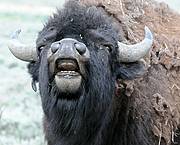
.
Further Reading
.
http://www.iucn.org/iyb/resources/news/
http://www.cbd.int/2010/welcome/
http://www.countdown2010.net/year-biodiversity
http://www.environment.gov.au/biodiversity/
http://www.environment.gov.au/biodiversity/strategy/draft-strategy.html
http://www.healthyparkshealthypeoplecongress.org/







